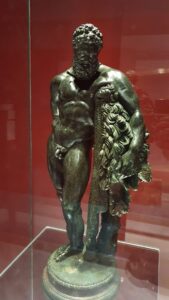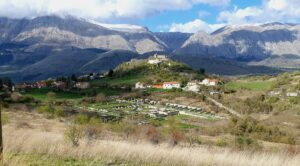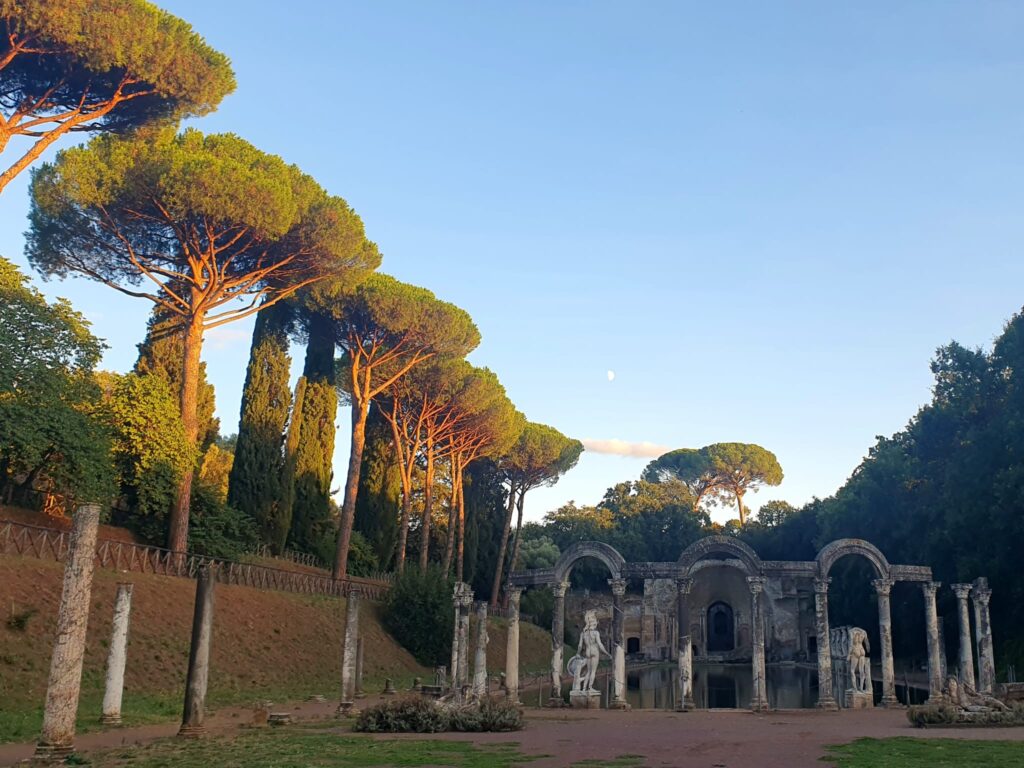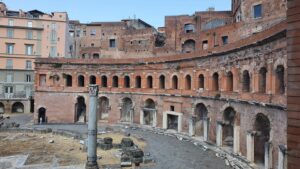A unique opportunity to discover the treasures of Europe’s archaeological heritage: from June 14 to 16, the European Archaeology Days and, thanks to guided tours of excavations and sites managed by the Ministry of Culture, an opportunity to admire the richness and beauty of timeless masterpieces.
The event, which takes place in several member states of the Council of Europe, allows enthusiasts, but not only, to participate in special guided tours with experts, access to activities dedicated to children and adults and conferences with specialists in the field in collaboration with universities and Superintendencies working in the area. An unexpected and surprising way to approach and learn about the world of archaeology, which in Italy offers an extraordinary insight into a precious cultural heritage.
To spread knowledge of the ancient world in the city of Rome, a veritable open-air museum, archaeologists and art historians share recent discoveries made on excavation sites while youngsters can try their hand at a simulated archaeological dig in the Imperial Forum area, among many other initiatives.
The Capitoline Museums are being told about the Capitol in the Middle Ages while special openings are scheduled with guided tours of Porta San Paolo, the Casale di Giovio at Villa Doria Pamphilj, the Barracco Museum of Ancient Sculpture, and the Museum of the Roman Republic and Garibaldian Memory. For the occasion, the National Archaeological Museum has chosen to present to the public the restoration of an important piece: it is a so-called Etruscan bronze ‘graffione’ dated between the fifth and fourth centuries BC.
To discover the ancient peoples of Abruzzo, these are the initiatives of the region’s main museum institutions:
- MUNDA – Abruzzo National Museum in L’Aquila is offering a series of engaging free guided tours. This is an opportunity to learn about the Mammoth of the Castle preserved in the East Bastion of the Spanish Fort: this is the skeleton of Mammuthus meridionalis found in 1954 in Scoppito near L’Aquila, a fossil dating back 1,300,000 years and one of the most complete specimens in Europe.
 The National Archaeological Museum in Campli on Sunday 16 is organizing the event “Little Archaeologists at the Museum,” a day dedicated to the youngest to bring them closer to the world of archaeology but also to teachers and parents, with a free guided tour and the opportunity to experience some workshops. On the same day, the association Ves Gentes makes known and experience, through reconstructions of ancient games and toys, how adults and children had fun in ancient times, a plunge into the past in which visitors can also have fun with talus, dice, nuts and pawns.
The National Archaeological Museum in Campli on Sunday 16 is organizing the event “Little Archaeologists at the Museum,” a day dedicated to the youngest to bring them closer to the world of archaeology but also to teachers and parents, with a free guided tour and the opportunity to experience some workshops. On the same day, the association Ves Gentes makes known and experience, through reconstructions of ancient games and toys, how adults and children had fun in ancient times, a plunge into the past in which visitors can also have fun with talus, dice, nuts and pawns. - In Chieti, in an elegant neoclassical villa in the heart of the Villa Comunale, one can visit the headquarters of the National Archaeological Museum of Abruzzo – Villa Frigerj where one can admire the famous Capestrano Warrior, an artistic masterpiece from the 6th century B.C. to which the ‘Beyond Time’ room is dedicated. There is also a rich numismatic section, along with artifacts found in the most relevant Abruzzi archaeological contexts dated between the protohistoric and early medieval phases. An authentic journey through time to discover the ancient peoples of Abruzzo through the artifacts of the Sabines, Equi, Marsi, Vestini, Peligni, Marrucini, Samnites, Frentani and Pretuzi.
- On Sunday, June 16, the Superintendence and theUniversity of Teramo are organizing an accompanied tour of the Piano d’Accio archaeological site in the province of Teramo. Here, in the course of preventive archaeology activities, burials referable to the Iron Age that can be placed between the 7th and 6th centuries B.C. were found. During the day, visitors are accompanied and guided by professionals currently working on the site.
In addition to museums, these will be ideal days to spend outdoors at archaeological sites scattered across Abruzzo and Lazio:
 Alba Fucens, a city founded by Rome as a colony of Latin law at the end of the 4th century B.C., is an archaeological area equipped with a wall circuit made of large stone blocks on which four city gates opened, still partially preserved today. With the end of the Roman Empire, decline also began for Alba Fucens, which was abandoned by its inhabitants around the 6th century A.D. However, on the hill to the northeast of the town, the medieval village of Albe arose, destroyed by the 1915 earthquake and whose ruins are still visible together with the remains of the Orsini Castle erected in the 14th century. The archaeological area is open to the public and can be visited freely. Alba Fucens can be reached via the A25 highway from the Avezzano and Magliano de’ Marsi exits.
Alba Fucens, a city founded by Rome as a colony of Latin law at the end of the 4th century B.C., is an archaeological area equipped with a wall circuit made of large stone blocks on which four city gates opened, still partially preserved today. With the end of the Roman Empire, decline also began for Alba Fucens, which was abandoned by its inhabitants around the 6th century A.D. However, on the hill to the northeast of the town, the medieval village of Albe arose, destroyed by the 1915 earthquake and whose ruins are still visible together with the remains of the Orsini Castle erected in the 14th century. The archaeological area is open to the public and can be visited freely. Alba Fucens can be reached via the A25 highway from the Avezzano and Magliano de’ Marsi exits. - Corfinium an Italic city built by the Pelignians, over two thousand years ago was for a few years the capital of the Italic peoples federated against Rome during the Social Wars, the first city in history to issue its own currency with the name of Italy. Today, near the modern village of Corfinio one can admire the remains of Roman funerary monuments, called “murigni,” theAcquedotto delle Uccole, the Piazza del Teatro, built in the Middle Ages on the remains of the Roman theater, the mosaics in the Piana San Giacomo archaeological area as well as the Antonio De Nino Civic Archaeological Museum, with ten exhibition rooms documenting the transformations of the Peligna territory from the Neolithic to the Middle Ages and where it is possible to admire a specimen of a silver denarius with the legend “Italia.” Corfinium can be reached via the Pratola Peligna/Sulmona exit on the A25 highway.
- Iuvanum the very ancient city of the Carricini, a tribe of the Samnite people, inhabited since the Bronze Age, is located near Montenerodomo (CH) and is home to the two temples built between about the 3rd and 2nd centuries B.C. and a sacred altar, bordered by polygonal walls overlooking the wide plain below and the forum. It is now the focus of the international Iuvanum Survey Project, which is a collaboration between the Soprintendenza ai Beni Archeologici di Chieti, the University of Chieti, Cardiff University, Oxford University and the University of the Basque Country. The archaeological area can be visited by exiting the A25 highway at Manoppello and continuing on SR5 and then the SS81 towards Casoli/Montenerodomo.
- Amiternum near L’Aquila, between the hamlets of San Vittorino, Coppito and Pizzoli one can admire the remains of this thriving center founded by the Sabines, the birthplace of historian Gaius Sallustius Crispus who was born here in 86 B.C. The main archaeological site consists of a theater, an amphitheater and a Roman domus, but other important remains have recently come to light, including the remains of a villa. It can be visited by exiting the A24 highway at the L’Aquila Ovest junction and continuing on the SS80.
- Hadrian’s Villa at Tivoli the most sumptuous and richest imperial residence of antiquity, declared a UNESCO World Heritage Site in 1999, was built between 118 and 138 A.D. by Emperor Hadrian in a verdant, water-rich area near Tivoli, ancient Tibur. The Villa covered an area of at least one hundred and twenty hectares and included residential structures, baths, nymphaeums, pavilions, and gardens. The extraordinary architectural and sculptural decoration of the villa has been an archetype imitated since the Renaissance. The archaeological area that can be visited is about 40 hectares and can be reached via the A24 highway from the Tivoli exit.









